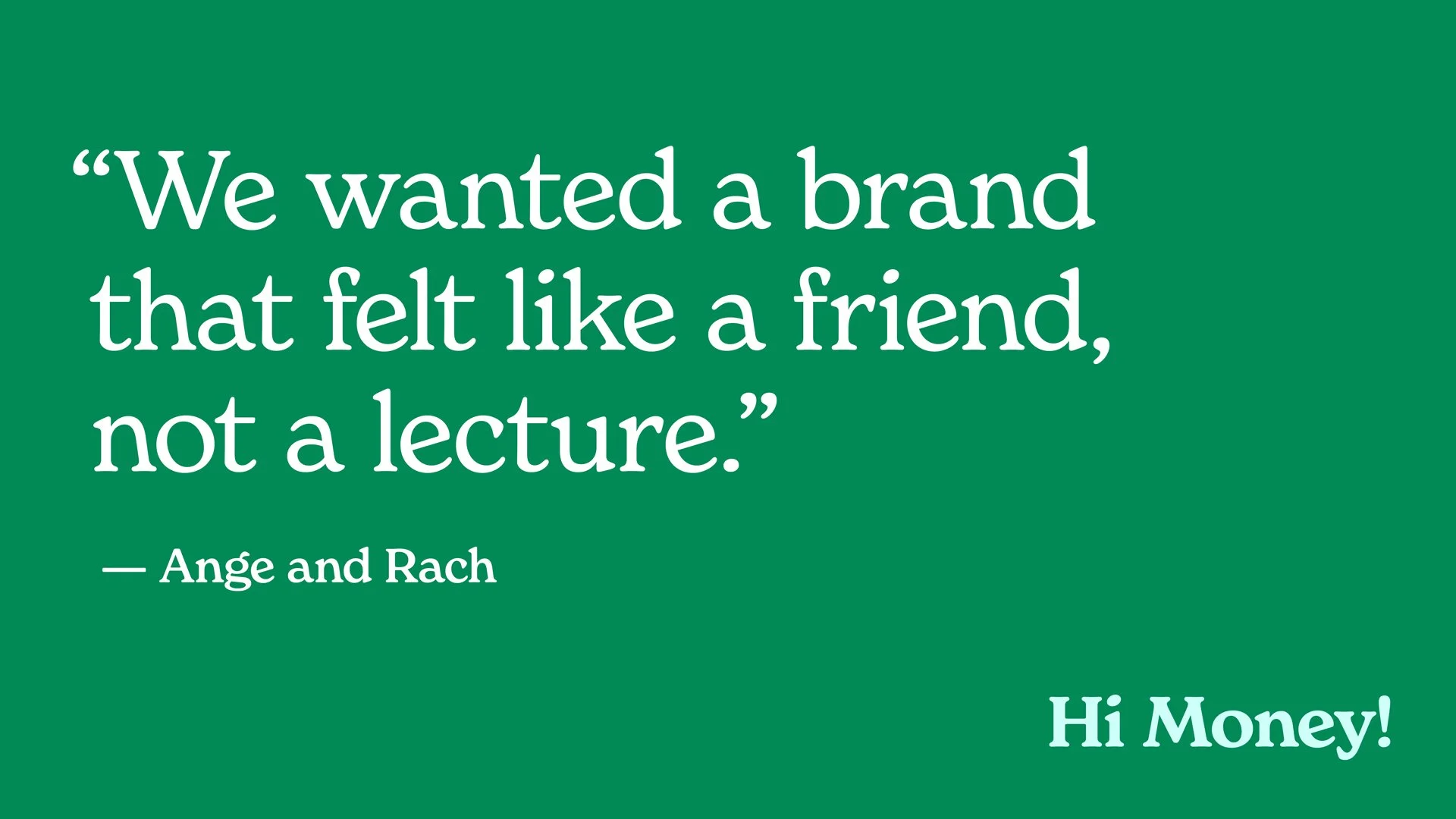Hi Money wants women to talk to their money. Literally.
The gender gap in financial wellbeing isn’t just stubborn — it’s systemic. Women retire with 25% less superannuation, earn $1 million less over their lifetimes, and are twice as likely to report low financial literacy.
Despite decades of calculators, campaigns and content, traditional finance education simply isn’t closing the gap. What’s getting in the way? Systemic inequity, alongside feelings of stress, avoidance and overwhelm. And an industry that isn’t speaking to the emotional side of money.
Financial wellbeing starts with emotional literacy
Hi Money, a New Zealand-based startup, is doing things differently. Founded by therapist Rach Davies and gender equity strategist and marketing veteran Ange Meyer, Hi Money helps women explore their relationship with money using therapeutic tools, community support and zero judgment.
It all started at the kitchen table.
“I wasn’t getting any traction,” Rach says. “Not because I wasn’t clever and using all the financial tools but because of how I thought and felt about money — it was an emotional issue. So one day, I said to Ange, ‘Let’s try something weird. I’ll pretend to be money. You talk to me like I’m a person.’”
That role-play cracked something open. “I realised I treated money like I would never treat another human being” she says. “I treated it without respect. When I shifted that, everything changed.”
Ange, who had built campaigns for major super funds, had her own reckoning. “I could sell financial complexity with ease,” she says. “But I still couldn’t face my own finances.”
Their shared insight? Financial literacy isn’t the fix. Emotional literacy is.
The Hi Money difference
Hi Money’s flagship program includes 12 self-paced modules, community Zooms and a WhatsApp group that gives women a safe space to rewrite their money story. They write letters to their money. They cry, laugh, vent, and unpack decades of guilt.
By week three, says Ange, “they’re asking for pay rises, opening super statements and finally feeling like it’s their money.”
Hi Money doesn’t focus on investing tips or budget hacks. It’s about shifting beliefs. As New Zealand’s Retirement Commissioner puts it, Hi Money is “the missing piece of the financial puzzle.”
Women aren’t bad with money. The system is bad for women.
For Hi Money, the shame many women feel about money isn’t personal, it’s structural.
“The patriarchy benefits from our silence,” Ange says. “Many women are conditioned to think that talking about money is rude or not ‘ladylike’. If we don’t talk about money, we can’t challenge the systems that undervalue us. The patriarchy thrives when women stay quiet, especially about power, pay and financial independence.”
Rach adds, “Poverty isn’t a character flaw. It’s the outcome of an unequal system.”
And when women realise that? “They go from saying ‘I’m bad with money’ to ‘this is outrageous.’ And that outrage fuels change.”
Building a brand that connects
Hi Money’s approach isn’t just about what they teach, it’s how they show up. From their forest green palette to their GIFs and plain-spoken emails, everything is designed to feel welcoming, not intimidating.
“We didn’t want to look or sound like a finance brand,” says Rach. “No establishment blue. No corporate tone. We wanted it to feel like a friend, not a lecture.”
Their comms philosophy is simple: short, sharp, human. “We’re in people’s inboxes. That’s a privilege,” says Ange. “We don’t send homework. Just helpful notes.”
Not financial advice (by design)
Hi Money isn’t licensed to give financial advice, and that’s the point. In Australia and New Zealand, advice is generally seen as expensive and reserved for people who already have wealth.
By sidestepping the advice label, Hi Money creates an accessible entry point for women who have complicated feelings about money and the professional advice industry.
Scaling for impact
Next on the roadmap? A book deal with Allen & Unwin (launching February 2026 in Australia and New Zealand) and partnerships with banks, super funds and workplaces.
“Imagine if your bank or super fund gave you access to money therapy as a member benefit,” Ange says. “It’s scalable, it’s evidence-based and it works.”
Hi Money is also expanding into employee wellbeing, offering training for customer-facing teams and adding depth to companies’ employer value propositions. “You might not be able to offer a raise,” says Ange, “but you can help your team feel more in control of their money. And that’s transformational.”
What financial marketers should take from this
For finance brands trying to connect with women, the takeaway is clear: it’s time to meet people where they are.
Hi Money’s research found 40% of women are dissatisfied with their financial provider, and 80% don’t feel understood. And yet, women make most household financial decisions and are set to inherit significant wealth in the coming decades.
Brands that invest in building women’s financial confidence today are not only creating more profitable, engaged customers now, they’re also laying the foundations for the next generation of financially empowered members, investors and decision-makers.
What does effective marketing look like in this space? Rach and Ange have a few tips:
Make your content feel safe and human.
Lead with emotion, not logic.
Keep it short and actionable.
Reflect real life, not just financial goals.
“Most people don’t want a spreadsheet,” says Rach. “They want to feel understood.”
And if your brand isn’t helping them do that? You’ll be left behind.
As Ange puts it: “There’s gold in them lady hills. And if you’re not thinking about this, you’re going to miss it.”
Contact Hi Money

